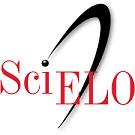Submissões
Condições para submissão
Como parte do processo de submissão, os autores são obrigados a verificar a conformidade da submissão em relação a todos os itens listados a seguir. As submissões que não estiverem de acordo com as normas serão devolvidas aos autores.- A contribuição é original e inédita, e não está sendo avaliada para publicação por outra revista; caso contrário, deve-se justificar em "Comentários ao editor".
- O arquivo da submissão está em formato Microsoft Word, OpenOffice ou RTF.
- URLs para as referências foram informadas quando possível.
- O texto segue os padrões de estilo e requisitos bibliográficos descritos em Diretrizes para Autores, na página Sobre a Revista.
Declaração de Direito Autoral
Esta revista proporciona un acceso abierto inmediato a su contenido, basado en el principio de que ofrecer al público un acceso libre a las investigaciones ayuda a un mayor intercambio global de conocimiento. La revista responde a la licencia CC Reconocimiento-NoComercial-SinObrasDerivadas 4.0. El envio de una artículo a la revista implica que los autores están de acuerdo con sección no exclusiva de derechos.
This journal provides immediate open access to its content, based on the principle that providing the public with free access to research supports a greater global exchange of knowledge. The journal responds to the CC Attribution-NonCommercial-NoDerivativeWorks 4.0 license. Submitting an article to the journal implies that the authors agree to the non-exclusive rights section.
Política de Privacidade
Os nomes e endereços informados nesta revista serão usados exclusivamente para os serviços prestados por esta publicação, não sendo disponibilizados para outras finalidades ou a terceiros.




.jpg)
_de_logo.jpg)
















